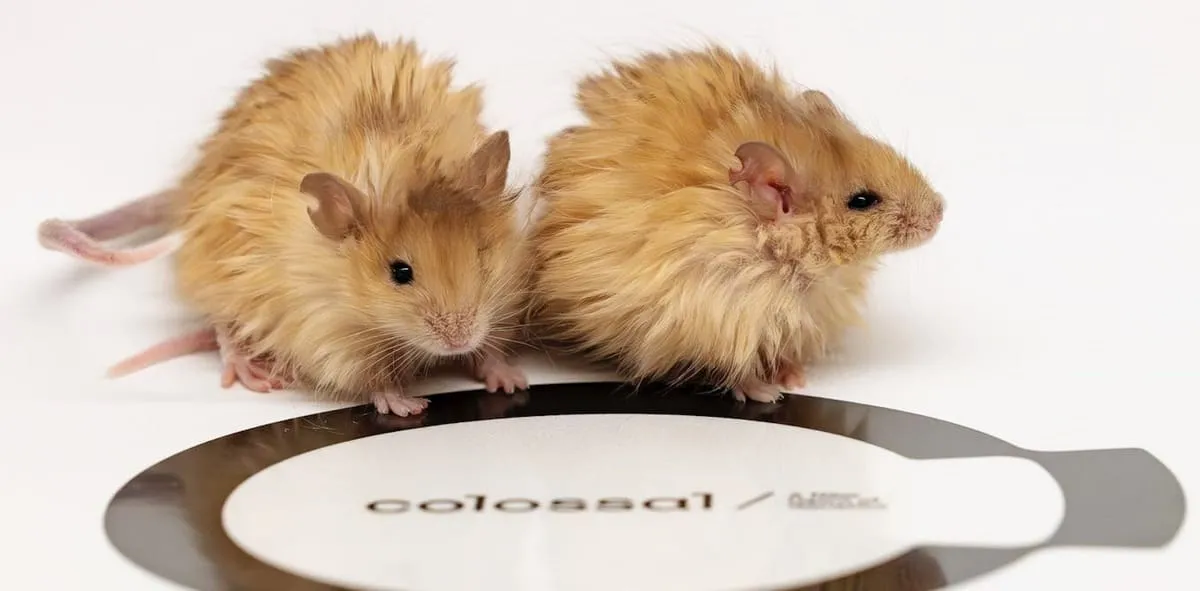
Let’s dive into an intriguing question: Are you a man or a mouse? Or perhaps a mammoth? Or even a mammoth mouse? I apologize for the multiple questions, but recent scientific advancements have blurred the lines of taxonomy. In this week’s edition, we explore the fascinating world of genetic engineering, including a new “woolly mouse,” the unsettling contents of hornet guts, the origins of primordial supernova water, and an uplifting story about our progress in shielding ourselves from cosmic radiation.
In the latest study titled “Multiplex-edited mice recapitulate woolly mammoth hair phenotypes,” researchers led by Rui Chen at Colossal Biosciences unveil a breakthrough in the quest for de-extinction. The last woolly mammoths disappeared from Earth around 4,000 years ago, yet they continue to captivate our imaginations. This biotech startup, known as the “de-extinction company,” has created a unique “woolly mouse” chimera through gene-editing tools like CRISPR.
These innovative mice exhibit exaggerated hair traits, including curly, textured coats and golden-brown hair, which the research team believes could provide insights into the genetic adaptations that allowed mammoths to thrive in harsh climates. Importantly, these mice do not contain real mammoth DNA; instead, they showcase gene mutations akin to those of mammoths and other mammals. “This study establishes a rapid platform for testing mammoth-centric genetic variants while advancing methods for complex genetic model generation,” stated the researchers.
Published on bioRxiv, a preprint server for biology research, this study has yet to undergo peer review. The authors have also disclosed potential conflicts of interest, noting that they hold patents related to this research and may have financial stakes in Colossal Biosciences. Critics have raised concerns about the implications of this research, questioning whether these mice genuinely represent a step toward resurrecting mammoths. The commercialization of scientific breakthroughs can often lead to inflated narratives, reminiscent of the infamous Jurassic Park scenario.
Shifting gears, let’s explore a rather gruesome study titled “Broad ecological threats of an invasive hornet revealed through a deep sequencing approach.” Researchers, including Siffreya Pedersen from the University of Exeter, delved into the digestive systems of the Asian hornet (Vespa velutina), an invasive predator causing ecological disruption across Europe. Their goal was to analyze the dietary habits of this formidable species.
The findings were astonishing, revealing a staggering 1,449 different species consumed by the larvae of these hornets. “Through deep sequencing of gut samples from over 1500 V. velutina larvae, we aimed to provide the first large-scale dietary analysis,” Pedersen explained. The Asian hornet has demonstrated versatility in its diet, preying on various invertebrates, including pollinators like the honey bee, Apis mellifera. The research highlights the urgent need to address the ecological threats posed by this invasive species.
Next, we transition to a more cosmic narrative with the study “Abundant water from primordial supernovae at cosmic dawn.” Researchers led by D.J. Whalen at the University of Portsmouth have simulated the explosive births of the universe's first stars, known as population III stars. These simulations suggest that water, a fundamental component for life, formed in the cooling halos surrounding these supernovae, dating back approximately 13.6 billion years.
“Primordial supernovae were the first nucleosynthetic engines in the Universe, forging heavy elements required for the formation of planets and life,” Whalen stated. This research opens exciting avenues for understanding the origins of water in the universe and its implications for the possibility of extraterrestrial life.
Finally, we conclude on a hopeful note regarding environmental science. In the study “Fingerprinting the recovery of Antarctic ozone,” researchers led by Peidong Wang at the Massachusetts Institute of Technology have employed advanced climate modeling tools to evaluate the recovery of the ozone layer, significantly impacted by human activity. The Montreal Protocol of 1987, which banned ozone-depleting substances (ODSs), has been hailed as a monumental environmental success.
The findings indicate a positive trend, providing robust evidence that the reduction of ODSs is contributing to the recovery of the ozone layer over Antarctica. “We demonstrate that the data and simulations show compelling agreement in the fingerprint pattern of the ozone response,” Wang said. This achievement serves as a reminder of the potential for international collaboration in addressing global environmental challenges.
As we reflect on these diverse scientific explorations—from the implications of de-extinction efforts to the marvels of cosmic history and environmental recovery—one thing is clear: the pursuit of knowledge continues to unveil the mysteries of our world and beyond. Thank you for joining us in this week's journey through the incredible realm of science!